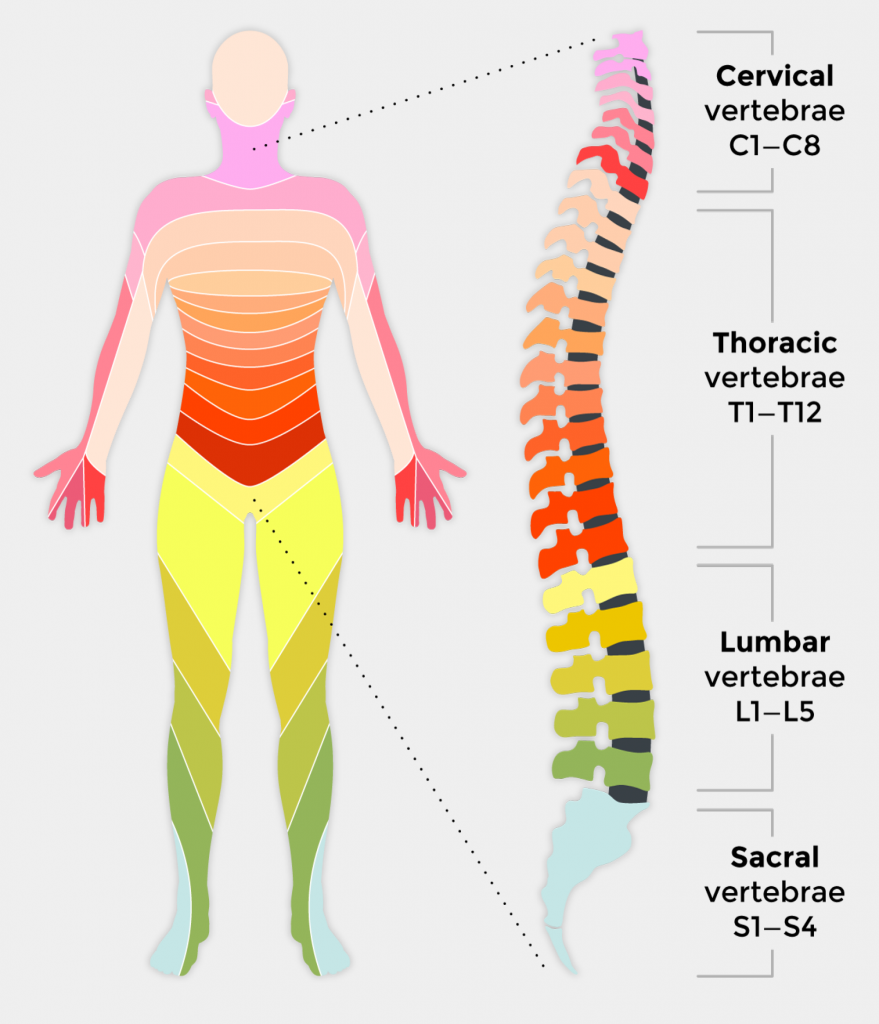What is a Spinal Cord Injury (SCI)?
Spinal cord injury (SCI) often affects young and fit people and will continue to affect them to a varying degree for the rest of their lives. Spinal cord injuries often occur after high-energy traumatic events, such as motor vehicle accidents and sporting accidents.
In the extreme, SCI may prove immediately fatal where the upper cervical cord is damaged, paralysing the diaphragm and respiratory muscles. Partial cord damage, however, may solely affect individual sensory or motor nerve tracts producing varying long-term disability. It is important to note that there are an increasing percentage of cases where the cord damage is only partial and some considerable recovery is possible, providing the condition is recognised and managed appropriately. Long-term rehabilitation is often required.
The spinal cord runs in the spinal canal down to the level of the second lumbar vertebra in adults. The amount of space in the spinal canal in the upper neck is relatively large, and excessive movement following an injury can worsen the long-term outcomes. In the thoracic area, the cord is wide, and the spinal canal relatively narrow and injury in this area is likely to completely disrupt and damage the spinal cord.

Spinal shock is a state of complete loss of motor function and often sensory function found sometimes after SCI. This immediate reaction may go on for some considerable time, although the spinal cord may recover. Neurogenic shock is the state of poor tissue perfusion caused by blood vessel tone loss after spinal cord injury.
When to suspect a Spinal Cord Injury
When considering spinal cord injury, it is vital to determine the mechanism of injury in order to understand the forces involved in causing the injury including hyperflexion, hyperextension, rotation and compression and combinations of all the above.
Injury most frequently occurs at junctions of mobile and fixed sections of the spine. Hence fractures are more commonly seen in the lower cervical vertebrae where the cervical and thoracic spine meets (C5, 6,7/T1 area) and the thoraco-lumbar junction (T12/L1). 10-15% of patients with one identified spinal fracture will be found to have another.
Motor vehicle collisions, falls and sporting injuries are the most common causes of SCI. ‘Rollover’ collisions and the non-wearing of seat belts, causing the head to vehicle body contact, and pedestrians struck by vehicles are likely to suffer SCI. Ejection from a vehicle increases the risk of injury significantly. Certain sporting accidents, especially diving into shallow water, horse riding, rugby, gymnastics and trampolining have a higher than average risk of SCI. Rapid deceleration injury such as gliding and light aircraft accidents also increases the risk of SCI.
The injured patient may complain of:
- neck or back pain
- loss of sensation in the limbs
- loss of movement in the limbs
- the sensation of burning in the trunk or limbs
- the sensation of electric shock in the trunk or limbs.





